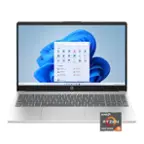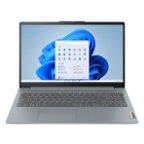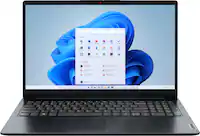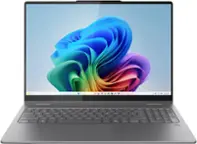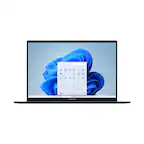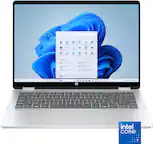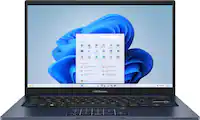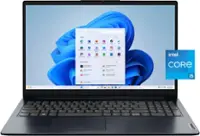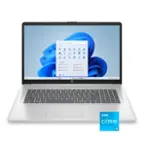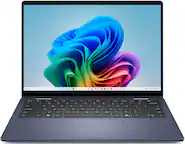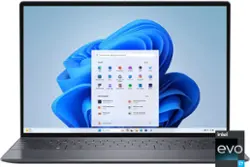
Dell - XPS 13 Plus 13.4" OLED Touch Laptop - 13th Gen Intel Evo i7 - 32GB Memory - Intel Iris Xe Graphics - 1TB SSD - Graphite
Customers are saying
Customers consistently note the Dell XPS 13 Plus laptop's stunning OLED screen, fast performance, and lightweight design. Many users appreciate its compact size and powerful performance, making it ideal for work and travel. However, some users have concerns about its battery life and heating issues, while others wish it had more ports.
Customer Images
The vast majority of our reviews come from verified purchases. Reviews from customers may include My Best Buy members, employees, and Tech Insider Network members (as tagged). Select reviewers may receive discounted products, promotional considerations or entries into drawings for honest, helpful reviews.
- Rated 5 out of 5 stars
Dell XPS 13 13th Gen: Sleek Design, Powerful Perfo
As an avid user, I had the pleasure of experiencing the Dell XPS 13 13th Gen laptop, equipped with an impressive 32GB RAM, 1TB SSD, and an OLED touch display. Let me delve into why this laptop is a standout choice. Firstly, the sleek design of the Dell XPS 13 13th Gen is unparalleled. Its slim profile and minimalistic aesthetic make it a visually appealing device that stands out in any setting. The OLED touch display adds another layer of sophistication, providing vibrant colors and excellent contrast for an immersive viewing experience. Performance-wise, this laptop truly shines. With a 13th Gen processor and ample 32GB RAM, multitasking is a breeze. Whether I'm editing videos, running demanding software, or simply browsing the web, the Dell XPS 13 handles it all effortlessly. The 1TB SSD ensures ample storage space for all my files and applications, while also contributing to fast boot-up and load times. One aspect that particularly impressed me is the battery life. Despite its powerful specs, the Dell XPS 13 13th Gen manages to deliver long-lasting battery performance, keeping me productive throughout the day without constantly needing to recharge. In terms of usability, the keyboard is comfortable to type on, with well-spaced keys and satisfying tactile feedback. The touchpad is responsive and accurate, making navigation a seamless experience. Additionally, the inclusion of various ports, including Thunderbolt 4, USB-C, and a headphone jack, ensures compatibility with a wide range of peripherals. Overall, the Dell XPS 13 13th Gen surpasses expectations in terms of design, performance, and usability. Whether you're a professional seeking a reliable workhorse or a content creator in need of a powerful machine, this laptop ticks all the boxes. Highly recommended for anyone in search of a premium computing experience.
Posted by MartinD
- Rated 4 out of 5 stars
Unleashing Power and Elegance
The Dell XPS 13 Plus Graphite with i7, 1360p display, 1TB SSD, and 32GB RAM offers a powerful and sleek computing experience. The Intel Core i7 processor ensures smooth multitasking, while the 1360p display delivers crisp visuals. With a spacious 1TB SSD and ample 32GB RAM, it excels in storage and performance. The Graphite finish adds a touch of elegance to the durable and compact design. Whether for work or entertainment, this configuration of the XPS 13 impresses with its robust specifications and premium build.
Posted by Chirayu
- Rated 4 out of 5 stars
XPS Plus 9320: High Performance Portability
With any new laptop model, the latest hardware will certainly be an alluring aspect of one’s potential purchase; a fact even more emphasized by models that specifically target computer enthusiasts who will more than likely end up spending more to get their hardware demands met. As such, Dell’s XPS line of laptops, for example, have always been positioned for those who want a top end product regardless of price. Last year, the XPS Plus caught attention with a newly re-designed aesthetic that certainly stood out. By squaring off the keys and removing the shortcuts at the top, it was certainly eye catching. Thus, I was quite excited to test the newly released XPS Plus 9320 and see if the premium product was worth a look. Upon opening the box, I was pleasantly surprised to find a nice solid constructed box that houses the XPS 9320. Once opened, the XPS comes with several accessories including a USB-C male to USB-A female adapter, a USB-C to 3.5mm headphone jack, and the USB-C 60w power adapter. As expected, the XPS is extremely well built. The metal housed frame is solid and the graphite color is outstanding. Like previous generations, the XPS is extremely lightweight at 2.77 lbs. As with the XPS Plus from last year, the keys are squared completely off and the F-Keys are removed; replaced by an illuminated touch bar that works both as the familiar shortcuts to various functions and the F-keys. Additionally, the touchpad is made of glass and blends seamlessly with the palm rest. The whole section is extremely smooth to the touch. Lastly, since there are no physical buttons, the trackpad supports haptic feedback. For connectivity, the unit only has two Thunderbolt 4 ports. I really wish Dell would have included at least two more Type-C ports. I was also disappointed that the 3.5mm jack was removed since the thickness of this model is about the same as my XPS 9305 that has the jack along with a micro SD card slot. The other feature missing is the battery indicator button that would let you see how much charge the battery has remaining without turning it on. Nonetheless, this particular model configuration comes fairly loaded with the upgraded OLED 3.5K display (3456x2160), 32 GB of LPDDR5-6000, and lastly a 1 TB Gen 4 PCIe M2 SSD. Before I began my tests, there were a couple of observations that I wanted to address. Starting with the hardware, the OLED display is locked to 60Hz. I was quite disappointed with this given the prevalence of higher refresh panels. Another issue was since the trackpad was not sectioned off, I consistently worked my fingers outside of the designated trackpad area and had to readjust. For those with big fingers, you will have to get use to it. As for the keyboard, typing was more cramped than I expected. When compared to my other 13 inch laptops, the XPS Plus 9320 has larger shift, enter, tab, and caps lock keys. Naturally, this causes the other keys to be more centered than I expected, thus creating a more squished in keyboard. Overall, the design is certainly different and might require a bit of an adjustment period, though most should be fine. As for the Windows environment, as expected, there are several Dell utilities preinstalled to control certain aspects of the hardware and other settings. Since I wanted to provide data that resembles an out of box experience, I tried to minimize the changes that I made to the OS. The most drastic change was changing the power profile so the computer would not go to sleep during my tests. I also changed the minimum processor frequency to 1%. Furthermore, I disabled all of the startup items except for the Windows security, Realtek Audio, My Dell, and the Waves Max Audio executables. Next, I completely uninstalled McAfee Antivirus.Lastly, all of the windows updates were installed. After they completed, I went into the BIOS and disabled the UEFI Capsule Firmware setting to prevent any more BIOS installs over Windows Update. I also disabled the Power On Lid setting to prevent the computer from turning on when you open the lid. Lastly, these results are what I observed during testing. Your results will likely differ, but this should give you an indication of what to expect. All tests were conducted on AC power and on performance mode. For my first test, I wanted to test the new XPS 9320 against the previous CPUs of the last two years. Using CPU-Z 2.06, I ran the built in benchmark and compared the new XPS model to my Yoga 9i that features an i7-1260p. For additional data, I included the 11th Generation i7-1165 G7 found on my XPS 9305 from 2021. The results are as shown: I7-1360P - Single: 761.7/ Multi: 6,227.7 (12 Cores / 16 Threads) I7- 1260P - Single: 672.2 / Multi: 5,502.8 (12 Cores / 16 Threads) I7-1165G7 - Single: 598.1 / Multi: 2,809.4 (4 Cores / 8 Threads) As you can see, the CPU improvements made over the last few years is quite spectacular. Despite the 11th generation only being a quad core, it still holds its own in single thread, though multicore shows its limitations. As for the 12th and 13th generations, the improvements are noticeable, especially on the multicore score. Certainly, this gives a general idea that the 1360p will be faster by all accounts. For my second CPU test, I wanted to run was a video encode to test the real-world performance of the 1360P. Using Handbrake 1.6.1 and the Very Fast 1080p preset, I sent a 29 GB M2TS file through the encoder. I set the frame rate to match the source of the original file and pass through the DTS-MA audio track. The results were noted below and compared: I7-1360p: 15 Minutes 40 Seconds / AVG FPS: 144.4 I7-1260P: 18 Minutes 20 Seconds / AVG FPS: 122.8 As you can see, it is pretty clear the 1360p offers a decent bump over the previous generation. Using HW Info, I noticed the P-Cores initially hit their rated turbo speeds of 4.9 GHz but quickly decreased to around the 3.0-3.2 GHz range. Connectively, the E-Cores were naturally slower and seemed to favor the 2.5-2.7 GHz range before dropping to 1.9 GHz. As expected, the CPU continued to decrease to keep its temperature in control as the P-Cores bottomed out to around 2.2-2.5 GHz. The CPU dropped from 100C to around 88-91C as it adjusted the core frequencies accordingly. Switching to my Yoga 9i, it was apparent that the thermal configuration was a bit more aggressive and caused the 1260p to lower its P-Cores immediately around 2.1-2.5 GHz range. Subsequently, the E-Cores dropped to around 1.6-1.8 GHz. As expected, the 1260P was able to drop its core temperature from 100C to around 64-69C depending upon the adjusted frequency. Overall, the i7-1360p performed as expected and certainly the new chip exceeded all expectations. It is clearly faster than the last generation it was designed to replace. The last CPU test I wanted to run was Cinebench R23 to get an overall snapshot of the last couple of generations. As an IT professional, I have always been excited to see the performance gains from the previous generations and this year was certainly exciting. To demonstrate this, I decided to test my older XPS 9305 that features an i7-1165G7. Additionally, I used my Yoga 9i to showcase last year’s i7-1260p. The results are noted below: I7-1360P - Single: 1,875 / Multi: 11,102 (12 Cores / 16 Threads) I7- 1260P - Single: 1,627 / Multi: 9,988 (12 Cores / 16 Threads) I7-1165G7 - Single: 1,186 / Multi: 3,764 (4 Cores / 8 Threads) Next, I wanted to test the included 1 TB PCIe Gen 4 drive that shipped with the XPS 9320. As such, I was curious to see performance of the included drive. Additionally, HW Info 7.46 lists the drive as a Western Digital SN810 1 TB drive. Using CrystalMark 8.0.4c, I ran the benchmark using default settings. The results are below: Sequential Read Q8T1: 6,728.64 MB/s / Sequential Write Q8T1: 5306.31 MB/s Sequential Read 4K Q1T1: 74.34 MB/s / Sequential Write 4K Q1T: 164.41 MB/s Surprisingly, the results here are quite amazing given that most drives that ship with laptops are usually not the fastest. To supplement the results here, I also decided to transfer my music folder that holds 5,925 files and 1,298 folders. It is 33.4 GB in size. I transferred the folder from my WD My Passport 1 TB external SSD (Model: WDBAGF0010BBL). As soon as the transfer began, the transfer immediately shot over 700 MB/s, before holding consistently around 690-710 MB/s. The SSDs wasted no time and finished the transfer in under a minute. Lastly, I copied a 55 GB 4K file to the XPS. The transfer held consistently a round 800-820 MB/s and was finished in a little over a minute. Overall, the XPS is extremely fast out of the box. In conclusion, the XPS Plus 9320 performs exactly as it was intended to do. It is a great portable machine that is plentiful in speed and has the sleekness to attract potential buyers. While the cost is easily debatable, especially given other options with similar or even better hardware, the XPS Plus 9320 still fulfills what it was designed for: a small portable machine that an enthusiast can enjoy with lots of RAM and storage out of the box without having to immediately upgrade it. However, this doesn’t mean it is without criticism. While keyboard felt a little cramped and the trackpad took some time to get use to, the limitation of only two thunderbolt 4 ports was perhaps the most disappointing aspect given its price point. Lastly, it was also puzzling that the OLED display was locked only to 60 Hz. Despite these gripes, I still think its worth a look, provided at least you are content with the shortcomings I have outlined here. Thus, with that said, the XPS Plus 9320 comes recommended.
Posted by Dragonhunter281

